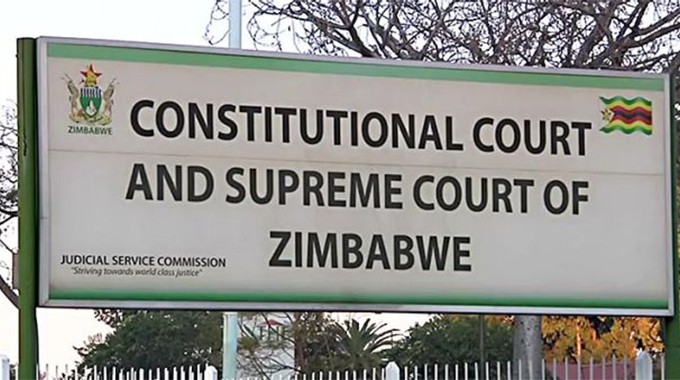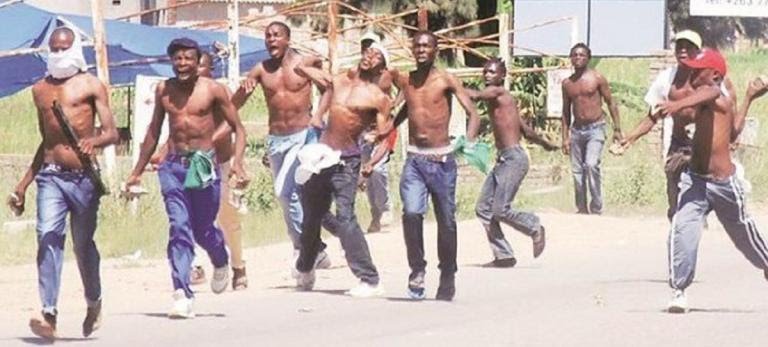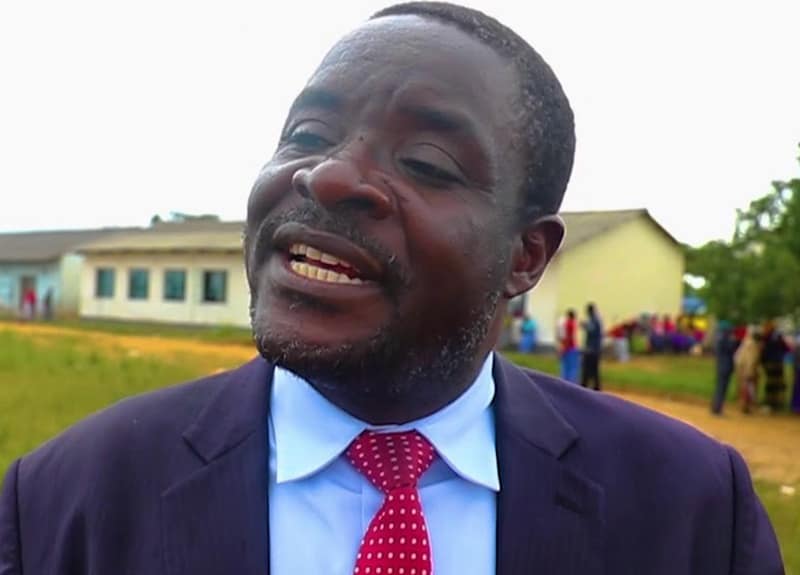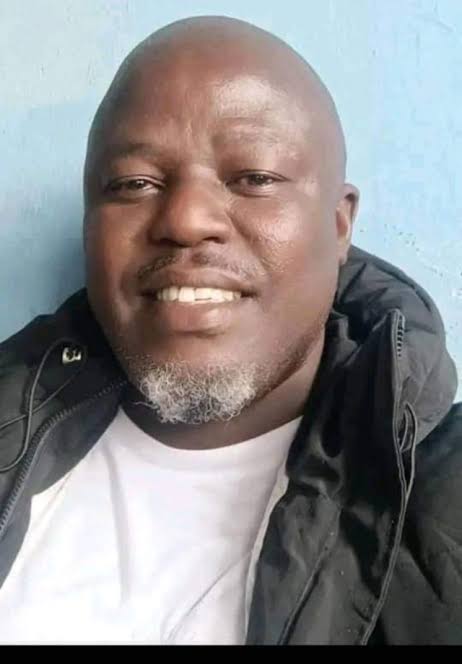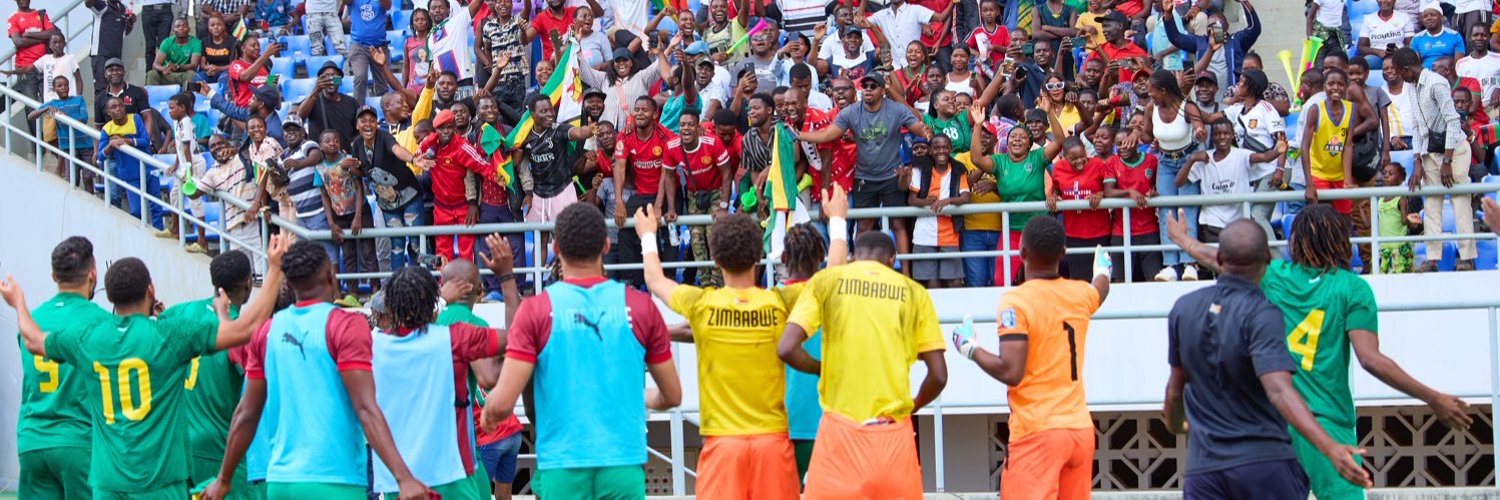Alex T. Magaisa
This BSR is a critical examination of the judicial appointments process, as witnessed in the public interviews of candidates for the Constitutional Court this week. This is an important process which defines the composition of the third arm of the state.
One of the major changes introduced by the Constitution which was adopted in 2013 was a new process of judicial appointments. Previously, judges were appointed by the President after consultation with the Judicial Service Commission (JSC). The President had no obligation to follow the advice of the JSC. He only had to consult it but could ignore its advice.
In practice, the Minister of Justice, Legal and Parliamentary Affairs was the man in charge of the process. He scouted for judicial candidates and he often picked those who were familiar to him. It was the Minister who presented the candidates to the President. It is fair to say that this system operated as a form of an old boys’ club and to that extent it was too elitist and promoted patronage. The opaqueness of the process made it undemocratic and exclusionary.
The new process under the 2013 Constitution followed the path already set by South Africa, Kenya and other peers on the continent. It requires judicial candidates to undergo a public interviewing process.
It also allows members of the public to participate in the process by giving every citizen an opportunity to nominate a candidate of their choice and to observe the public interviews. That way, the performance of the candidates is a public matter, no longer the preserve of elites in their closed clubs and boardrooms.
For the candidates, there is literally no place to hide as they are scrutinised not just by the interviewing panel but also by members of the public in the gallery, which has expanded to the living rooms and offices thanks to television and live streaming technology. Therefore, Zimbabweans both at home and in the Diaspora were equal participants in this week’s process.
Public participation in the judicial appointments process fulfils the promise made in the Constitution, namely that judicial authority derives from the people. In this respect, the new process is more transparent and accountable. It is one of the major democratic achievements of the constitution-making process.
It is not the intention of the BSR to carry out a review of the performance of each candidate. The intention is to critique the process and highlight areas that need improvement. Having participated in the crafting of the provisions, it was interesting for me to observe their implementation through the interview process.
It was fascinating to gauge the extent to which the process fulfilled my expectations. This BSR therefore presents my observations on the extent to which the process meets the promise of the Constitution.
Too procedural
The first observation is that the questions were predominantly procedural. Questions may either be procedural or substantive. They are procedural when they focus on rules of constitutional procedure.
They are substantive when they deal with the substance of constitutional law. The questions were tilted in favour of procedural rules. They were very technical and required candidates to memorise rules of how cases are brought before the Constitutional Court.
While it is useful to know legal procedures, I do not think they provide a good test for a candidate of the Constitutional Court. Such questions test the ability of a candidate to memorise rules of procedure, but they do little to help ascertain a judge’s grasp of substantive issues of constitutional law.
These procedures are provided for in the Constitution and Rules of the Court. Even the most competent judge would have to refer to these rules from time to time. The key is not whether one can remember the rules in an interview situation but whether they know where to find the law.
Therefore, when the panel asks about remedies where a magistrate has refused to refer a matter to the Constitutional Court on the grounds that the application is frivolous and vexatious and a candidate refers to the Martins’ case, it is clear that the judge knows where to find the law.
There is no need to cross-examine the candidate as if he were in a court of law, in a manner that suggests a mission to prove that the candidate does not know the law. Such an exercise is not necessary.
In some ways, the excessive focus on procedural questions is reflective of one of the weaknesses of the current Constitutional Court. It is that the court is caught up in procedural matters and cases are often dismissed on technicalities.
Two of the candidates referred to this problem. Justice Makarau talked about dismissal of cases on technicalities while Justice Patel said one problem has been a lack of cases at the Constitutional Court because they are often dealt with at preliminary stages by the Chief Justice or the Deputy Chief Justice.
With a Constitutional Court that is so caught up in procedural matters, it is not surprising that the interviewing panel was also too pre-occupied with procedural questions. But they are not a good test for Constitutional Court judges.
Limitations regarding substantive issues
More significant than attempting to test the memory of a judicial candidate is an inquiry into their philosophical reflections on matters of constitutional significance. In other words, what is the candidate’s understanding of constitutional jurisprudence and their philosophical inclinations concerning constitutional law?
What are the candidate’s views on moral and ethical issues such as abortion, the death penalty, gay rights, euthanasia that have constitutional implications? In short, the questions should test, not the candidate’s ability to memorise rules but their understanding of high principles of constitutional law.
There were a few questions that attempted to address this area but there remained a deficit.
The first was the question requiring an explanation of the concepts of constitutional order, constitutionality and constitutionalism. This question called upon a candidate to demonstrate a broad understanding of high principles of constitutional law.
Surprisingly, most of the candidates performed dismally on this seemingly basic question. A candidate for the Constitutional Court should never struggle to distinguish constitutionality from constitutionalism, let alone defining constitutional order.
Constitutional Order
Constitutional order refers to a political order that is underpinned by and complies with the constitution of a state. A military coup represents a threat to the constitutional order because it upsets the arrangements that are underwritten by the constitution. The candidates had a ready example which they could have used. When soldiers take to the streets, as they did in November 2017 without the order of the Commander-In-Chief, they are going against the constitutional order. Constitutional order is based on formalism.
It does not adequately address the qualitative aspects of the government. Therefore, a constitutional order can provide the basis for both a dictatorship and a democratic political arrangement. A constitutional order may also provide justification for monarchical government.
The main appeal of constitutional order is stability. Things must be done in accordance with the arrangements mandated by the Constitution, whether good or bad. Hence the call by both democracies and dictatorships to respect the constitutional order.
In fact, realising the presence of dissent, dictatorships are typically always in defensive mode, regularly reminding citizens to respect the constitutional order. This explains why there are so many people charged with the offence of attempting to overthrow a constitutional government. These charges represent a political message for citizens to respect the constitutional order however unhappy they might be with the government.
Constitutional order is good for society, but it is even better for those in charge of state power. A good candidate would have explained the concept of constitutional order by demonstrating these nuances. Disappointingly, most of the candidates gave very dry, functional and uninspiring answers.
Constitutionality
Constitutionality denotes compliance with the constitution. When one is considering a piece of legislation, the question is whether it is compliant with the Constitution. Like constitutional order, constitutionality is largely a dry exercise which involves box-ticking, especially when the focus is on the literal words rather than the purpose.
Therefore, a very bad law might still be adjudged constitutional if it is determined to be compliant with the Constitution. If the Constitution authorises dictatorship, laws that allow dictatorial rule would pass the test of constitutionality. Therefore, many dictatorships in history have all operated in terms of a constitution and they have all justified their actions based on constitutionality.
Constitutionalism
Constitutionalism, on the other hand, goes further and deeper than the box-ticking exercise involved in constitutionality. Constitutionalism denotes a culture of limiting the power of the State. Constitutionalism refers to limited government; the set of constraints that are necessary to ensure that governmental power is not abused.
These limits on power now extend to non-state actors, recognising that they also have power which impacts citizens. Constitutionalism is therefore a culture of limiting the power in order to prevent abuse. Constitutionalism calls on more than written laws. It appeals to unwritten norms and codes that govern the conduct of those in power, constraining them against abuse of power.
It is inexcusable that candidates for the Constitutional Court confused constitutionality and constitutionalism, thinking as some of them did, that they meant the same thing. They are not the same thing and this inability to make that distinction gave a very poor impression of the candidates.
How does one intend to be a judge of the Constitutional Court when they cannot make a distinction between constitutionality and constitutionalism? Understanding this distinction sits at the very heart of constitutional law.
It is not surprising that most judgments of the Constitutional Court have tended to favour constitutionality, focusing more on technicalities than substantive aspects of constitutional law. Most of these judges mistakenly believe that they are promoting constitutionalism when all they are doing is reaffirming constitutionality.
As we have observed even a dictatorship can fulfil the conditions of constitutionality while failing dismally on the test of constitutionalism. Constitutionalism requires a more nuanced approach to judicial decision-making than the pedantic exercise of determining constitutionality.
Rule of law and human rights
Another important question which tested the candidates’ philosophical reflections on constitutional law was the Chief Justice’s inquiry into the link between fundamental rights and freedoms and the rule of law.
This question called upon the candidates to showcase their understanding of the concept of the rule of law, which is a key principle of constitutional law. A more nuanced response would have referred to the two conceptions of the rule of law: the formal and substantive schools of thought.
A formal conception of the rule law is dry and looks to the presence and requirements of the law. Under this conception, even a dictatorship can make a claim to operating based on the rule of law. A substantive conception of the rule of law on the other hand requires the protection of human rights.
This is what the question was asking for – a clear articulation that the protection of fundamental rights and freedoms is a reaffirmation of the substantive conception of the rule law. This is a version of the rule of law, championed by Lord Bingham, which is favoured by human rights advocates.
It would have been interesting, as a follow up question, if the Chief Justice had asked the candidates which version of the rule of law they prefer – the formal or the substantive – because that preference would give a fair indication of the kind of judge that the candidate would make on the court.
Those who prefer the formalist approach are likely to be more conservative in their approach while those who prefer the substantive version are likely to be more liberal in their interpretation of the Constitution, As it is, we are none the wiser. We know that some candidates do not even know the link between the rule of law and human rights while only a few do.
But even for those who do, we have no idea what their view is concerning the substantive or formal types of the rule of law. The interview did not test their ability to critically examine the concepts which would have showcased their philosophical dispositions on these important issues.
Judicial Activism
The other good question was on judicial activism, a concept which should have been easy to define with examples. However, again most candidates struggled to articulate their views on this issue. There is a lot of literature on judicial activism and indeed, there is a tradition of judicial activism especially in the 1990s Supreme Court.
Cases which challenged the delay of executing death row inmates; the canning of juveniles as a form of punishment were part of a tradition of judicial activism in the Zimbabwean Supreme Court.
The government had to intervene to change the Constitution to prevent more challenges, including the one over the use of hanging as a method of execution. There was also progressive realisation of women’s rights during the same era. Candidates had plenty of examples to talk about judicial activism.
It is a question that also called for a more nuanced analysis because while there is praise for activist judges, there is also criticism in equal measure. Critics of judicial activism argue that judges have no role in making laws, which is the preserve of the legislature. They accuse judicial activism of encouraging judges to make law which is undemocratic as they are unelected and not accountable to the public.
This was a great question for judges to showcase their views on an important issue for the judiciary. It’s a pity that there was no follow-up question, which would have enquired into the judge’s disposition regarding judicial activism – it would have given a fair indication whether the candidate is likely to be an activist judge or more conservative.
Lack of consistency and discrimination
Another important issue that was raised during the interviews but was poorly handled by the panel concerned abortion. This is an important moral and ethical issue which divides opinion not only in Zimbabwe but across the world.
A judicial candidate’s position on termination of pregnancy is a hugely important issue which can tilt the scales for or against a candidate depending on the panel’s composition. A similarly divisive issue is the death penalty. It was therefore good that the question was raised.
The great shortcoming, however, was that it was put to only 2 of the candidates. The first time the question was raised was when Justice Anne Mary Gowora was being interviewed, but she was the third candidate.
Justices Bhunu and Garwe before her had not been asked the same question. This understandably caused an outcry from the audience on social media. It was a clear case of gender stereotyping, asking a female candidate for her position on a difficult moral and ethical issue which was not asked of the male candidates before her.
Why, people asked, were the candidates being treated differently? The panel had erred grossly in discriminating between the male and female candidates. It was so blatant it was hard to believe that it was generated by a Constitutional Court panel.
It is possible that this public outcry reached the interviewing panel’s ears because later, the same question was put to Justice Patel. However, if the JSC was trying to correct its error, the Chief Justice made it worse when he intervened to advise Justice Patel that he did not have to answer the question on abortion.
This was odd because the Chief Justice had not intervened to give the same advice to Justice Gowora. The Chief Justice was ready to protect Justice Patel, but he did not offer the same protection to Justice Gowora.
It is trite that the same rules must apply equally to all players. The Chief Justice is the head referee on the interviewing panel, and he cannot apply one rule to some candidates and different rules for others. Such conduct is not only unfair but unconstitutional.
The abortion issue was not the only glaring inconsistency. There was a question on the remedies available to an applicant whose application to refer a matter to the Constitutional Court is rejected by a magistrate.
The question itself was vague because it should have been clear that it was a rejection by a magistrate. The vagueness caused some confusion with at least one candidate thinking it was a rejection by the Constitutional Court.
Several candidates struggled with this question and the Chief Justice appeared keen to use this as an opportunity to show his subordinates that they did not know the law. It was almost an exercise in humiliation, which was unnecessary.
However, the problem was the difference in the Chief Justice’s treatment of candidates regarding that question. Justice Bhunu got the worst of it but even Justice Zhou, who had shown general awareness by citing the relevant case law and was probably the best performer was not spared.
Interestingly, the Chief Justice uncharacteristically held back in relation to Justice Makarau, who gave the same answer. It gave the impression that the Chief Justice was sympathetic to Justice Makarau. He cross examined other candidates but went very soft on her. Again, it reflects poorly on the interview panel when different rules are applied to the candidates.
For all his glaring weaknesses, Justice Bhunu may feel hard done by that his old unresolved cases were brought to the panel while others were spared. For example, there is a long-standing judgment in the Tsvangirai presidential challenge in 2002 which is yet to be delivered. It was handled by Justice Hlatshwayo who was also a candidate.
Tsvangirai always used to talk about that outstanding judgment, and he went to his grave without ever having read the judgment giving reasons why his petition was dismissed. Bhunu is entitled to feel aggrieved that much was made of his poor job performance, but his fellow candidate was spared the embarrassment of being asked about an 18-year-old judgment. The suspicion is that the Constitutional Court is embarrassed to bring up a case which is politically sensitive and implicates the system.
Interviewing style
A further observation concerns the interviewing style. There were times when it resembled a disciplinary hearing without notice. It must surely have appeared so for Justice Bhunu and to some extent for Justice Hlatshwayo concerning the long-standing cases.
It is a terrible indictment on the JSC and the leadership of the judiciary that senior judges have sat on cases for such a long period of time. It is a failing of both the individual judge and the judicial system. How does a judge sit on cases for more than 5 years and the judicial system allows them to do so?
Indeed, when the Chief Justice brings files to an interviewing panel as evidence of a judicial candidate’s weaknesses, it suggests that the proper forum in which such problems are supposed to be resolved is failing.
The judicial interviewing process is not the forum for the Chief Justice to deal with his subordinates. He must fix the system because interviews do not happen all the time. They are not the appropriate forum to resolve what is clearly a serious problem creating injustice for litigants.
As head of the judiciary, the Chief Justice must take ownership of this serious problem and find a way to resolve it. As for judges applying for promotion when they know that they have skeletons in the cupboard, they are showing unwarranted arrogance and misplaced chutzpah.
They must clean up their closets before placing themselves up for public scrutiny because the result would be deep humiliation and embarrassment for them and their families.
Loquacious questioning
If the quality of answers was poor, it was also a reflection of the quality of the questions from the panel. The questions were long-winding and usually in more than one part. The Chief Justice’s first question for example was in four parts.
It was not necessary. The aim of the judicial interviewing process is not to confuse or catch out the candidates. It is to find out more about the candidate’s views on issues and those issues must be clear and specific.
There is no need for the loquacious questioning. It is not surprising that most candidates either got confused or they kept asking the interviewers to repeat parts of the question. The weakness is not with the candidates.
It is with the interviewing panel and its style of questioning. If the panel wants candidates to be clear and precise, their questions must also have clarity and precision. The interviewer can also follow up with more questions where necessary.
A suggestion to improve the quality of interviews is for candidates to be required to make a short presentation on a constitutional topic of their choice. A 10 to 15-minute presentation would give them sufficient scope to articulate something of interest to them and allow the panel and the public to get a good sense of what the candidate can do.
After all, as judges, they will be required to write and present judgments. The interviews are not supposed to be a trap for candidates; an opportunity for them to present something they would have prepared for is a good way to judge the quality of a candidate’s credentials.
Embracing technology
It was disappointing that there were fewer candidates than had been nominated. Initially there were 12 candidates, but for various reasons, 5 dropped out. That left just 7 candidates for 5 vacancies. It is not a wide choice, a problem made worse by the underwhelming quality of the pool.
It would not have been a big problem if the panel had 7 excellent candidates. The COVID19 pandemic certainly caused problems as some candidates may have struggled to present themselves physically from their current stations. This had caused the postponement of the interviews which had been scheduled for early September.
Nevertheless, it is unclear why the JSC did not adopt new technology. The world has adapted to the pandemic and everyone is using technology such as Zoom and Microsoft Teams to get around the challenges.
There is no reason why the JSC could not have organised using one of those platforms to interview some if not all the candidates. In future, the JSC must adapt and embrace technology.
Public Participation
One of the reasons for the limited pool of candidates is that the public are not using their opportunity to nominate candidates. As has already been stated, one of the changes brought by the 2013 Constitution to expand the nomination process by giving members of the public an equal opportunity to submit nominations.
This means whenever the JSC makes a call for nominations, any person (and this literally means anyone) can nominate a candidate of their choice. It is up to the JSC to examine the nominations and to short-list candidates.
Members of the public would have a legitimate cause for complaint if their nominations are rejected by the JSC. However, no one has complained that their nominations were rejected. If Zimbabweans complain that the pool of candidates is poor or that it has too few women, they must shoulder the responsibility because they did not take part in the nominations when the opportunity was presented.
For its part, the JSC must be more pro-active in encouraging members of the public to take part in the nominations and more specifically encouraging nominations of female candidates. Serious organisations adopt deliberate policies and practices that encourage public participation and the nomination of female candidates because of well-known previous discrimination.
It is not enough to just make a broad call for nominations. A statement like “Members of the public are encouraged to exercise their right to submit nominations”; “The JSC encourages the nomination of female candidates” would be useful additions to the usual advertisement calling for nominations. The JSC should also carry out public education campaigns using traditional and social media to ensure the public are well informed about their role in this process.
Why Amendment No. 2 must be resisted
Most people who took the opportunity to watch the judicial interviews expressed great satisfaction with the fact that they had been allowed to bear witness to the process. They were pleased to have been part of the audience, although they were disappointed by the performance of many of the candidates.
Some of them had not been aware that they were permitted to observe the process as part of the audience. Indeed, the comments on social media showed that most people did not even know that they had a right to nominate candidates for judicial office.
Oft-times people are quick to blame the Constitution or the legislation, but the real problem is a lack of knowledge by the public which limits their participation even where the law allows them.
The important thing is that people were able to participate as part of the audience and they also freely expressed themselves regarding the candidates’ performance. This was more than they had imagined was possible.
It was good that these interviews were held while Constitutional Amendment No. 2 Bill is currently before Parliament. This is the Constitutional Bill that seeks to change the process of appointing judges of the Supreme Court and the Constitutional Court.
The major change will be that judges that are currently serving will be appointed by the President and will no longer have to undergo public interviews. This means the President will have increased powers of appointing judges compared to the current position.
If this amendment had passed before the current selection process, only one candidate, Smart Mirirai would have been publicly interviewed because he is not a judge. The rest of the candidates who are serving judges would have been quietly appointed by the President without the public scrutiny that is provided by the public interviews.
However, as most of the public audience observed, there are severe weaknesses on the current bench. The public would never have known the deficit at the highest level of the judiciary. Replacing the current process with a private and opaque process would only promote mediocrity and patronage.
This is the reason why there has been stiff opposition to the Constitutional Bill. It is not only undemocratic, but it takes away the transparency and checks and balances that are in the current system.
There is no justification for changing the process except to allow the President greater powers of defining the composition of the judiciary without public scrutiny and promoting mediocrity and patronage.
For the first time in their history Zimbabweans were getting used to being participants in the judicial appointments process, which is a good thing because judicial authority derives from them. However, the Constitutional Bill seeks to take that away just when Zimbabweans were getting a taste of openness and transparency.
Professional Development
It was clear from the quality of the interviews that there is a need for more investment in continuous professional development for judges. They do not have to pursue academic qualifications, but they need regular refresher courses in matters pertaining to constitutional jurisprudence.
This is an ever-expanding area, with new challenges to the traditional model of the State-Citizen relations. Indeed, scholarship shows that traditional tools are no longer adequate to deal with the distribution of power within and beyond the State. For example, non-state actors wield enormous power, which may not be covered by the traditional instruments of accountability. The interviews showed judges who have served on the Constitutional Court struggling with basic concepts and principles.
The COVID19 pandemic has expanded platforms of learning through technology. Judges should participate in webinars and other online events as part of their learning processes. However, there are clear challenges.
One of the candidates pleaded computer illiteracy. She indicated that she has not participated in online events because of her inability to use computer technology. At least she was honest. This is not her fault. The JSC needs to invest in training judges in these basic things.
It will expand their ability to research when they form opinions and write judgments. There was also a plea of poverty. The judges cannot use their meagre personal resources to attend conferences where a fee is required. Again, it is for the JSC to make provision for this service. The Constitution requires judges to work on professional development and the JSC must assist them in this regard.
Risk of Illegality
A final issue that may affect this judicial selection process is the composition of the panel, which is affected by illegality. This illegality is in relation to the part played by the Deputy Chief Justice Elizabeth Gwaunza.
On 31 March 2020, the Constitutional Court held that Constitutional Amendment No. 1 Act was unlawful because the process by which it was passed was in breach of the Constitution. The breach related to the inadequate number of Senators who voted for it when the Amendment No. 1 was passed in 2017. The Deputy Chief Justice was appointed under Amendment No. 1. If Amendment No. 1 was illegal, then her appointment could not be valid.
Although the Constitutional Court found that Amendment No. 1 was illegal, it suspended the order for 180 days to allow the Senate to correct the error made by its predecessor. The legality of this order has previously been questioned in a past BSR.
An examination by Veritas in its Bill Watch 27/2020 is also a useful read. Nevertheless, although Parliament had 180 days to comply with the court order, Veritas, which meticulously tracks legislative processes, points out that the period expired without compliance.
Veritas states in its latest Bill Watch 63/2020, “Day 180 from 31st March was Sunday 27th September [2020], so the declaration of nullity has already come into operation. This means the Constitution of Zimbabwe Amendment (No.1) Act is null and void”.
The interviews were held on 28 September 2020, a day after Amendment No. 1 became null and void. Due to the declaration of nullity, it meant Deputy Chief Justice Gwaunza was no longer validly in office. Her appointment under an invalid constitutional amendment had been rendered null and void.
This raises a significant question over the legality of the judicial interviews at which she was a panelist. Even if the JSC gets away with it, it is embarrassing that the judicial appointments authority was not alive to the risk of illegality or that it went ahead anyway without regard to the legal position. This flagrant disregard of legal rules and limitations runs contrary to the requirements of constitutionalism.
Conclusion
There is much to be said about the judicial appointments process witnessed this week. The quality of the interviews was disconcerting given that these are candidates of the highest court in the country.
Out Constitutional Court is failing dismally in the task of improving constitutional jurisprudence. There are hardly any dissenting judgments, even on the most controversial issues. A judge of the Constitutional Court must have the courage to offer a different but reasoned opinion on an issue.
Even if they agree with the main judgment, someone must be able to offer a different take on the issue. The interviews gave a poor reflection on the bench. It suggests that the judges don’t read. They are not improving themselves intellectually.
Even of the Chief Justice takes a lead, a judge must be able to offer an opinion, whether it is supportive or dissenting. This is how the Constitutional Court provides jurisprudential leadership to the rest of the courts and the legal profession.
The lines of questioning by the panel of interviewers left much to be desired. The idea of public interviews is good and must be maintained, but the JSC must seek expert assistance so that the interview processes are fit for purpose.
The JSC may have good lawyers on its panel, but they do need help regarding interviewing skills. Being aggressive does not equate to good interviewing. In some cases, it came out as outright bullying, which embarrassed both the candidates and the audience. Indeed, in some instances it seemed like the interviewing platform had been convened to settle old scores.
More significant however, is that what the interviews are seeking to achieve from the candidates. It should not be about how best a candidate can memorise rules of procedure, but their understanding of constitutional doctrines and their views on matters of constitutional significance – something deeper that gives a better picture of the person who wants to occupy the office of a Constitutional Court judge.
Finally, as most people who witnessed the process might confirm, the current open and transparent process must be retained, and Amendment No. 2 which seeks to change it must be resisted. It is important to retain public participation in the judicial appointments process, regardless of whether the candidate is already a judge.
The people must participate in the process of choosing judges who occupy the highest court in the country and the current process allows for it. It must not be changed to suit the parochial interests of a president or serving judges.
WaMagaisa

